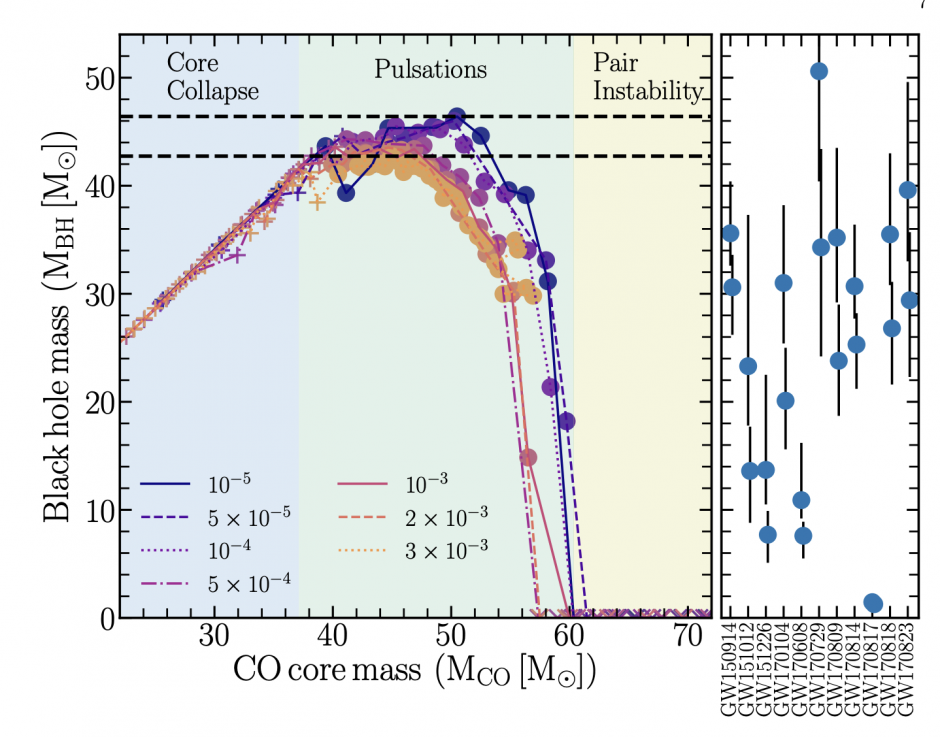
Gravitational-wave (GW) detections are now starting to probe the mass distribution of stellar-mass black holes (BHs). We investigate the predicted gap in the BH mass distribution and find that the location of the lower edge of the gap, at 45 solar masses, is remarkably robust against model assumptions and composition variations, making it the most robust predictions for the final stages of massive star evolution we have. We do find a dependency on the reaction rates, which implies that GW detections will constrain nuclear astrophysics. The robustness implies that there is a universal maximum for the location of the lower edge of the gap insensitive to the formation environment and redshift for first-generation BHs. This is promising for the possibility to use the location of the gap as a “standard siren” across the Universe.
Farmer, Renzo, de Mink et al. (2019, ApJ in press)
https://ui.adsabs.harvard.edu/abs/2019arXiv191012874F
Rob Farmer, the lead other, is a postdoc in my group in Amsterdam and is a visiting scientist at Harvard University.

Comments are closed